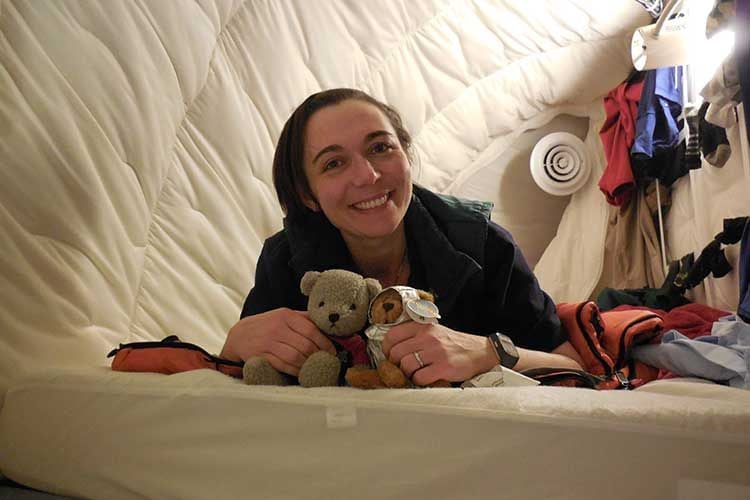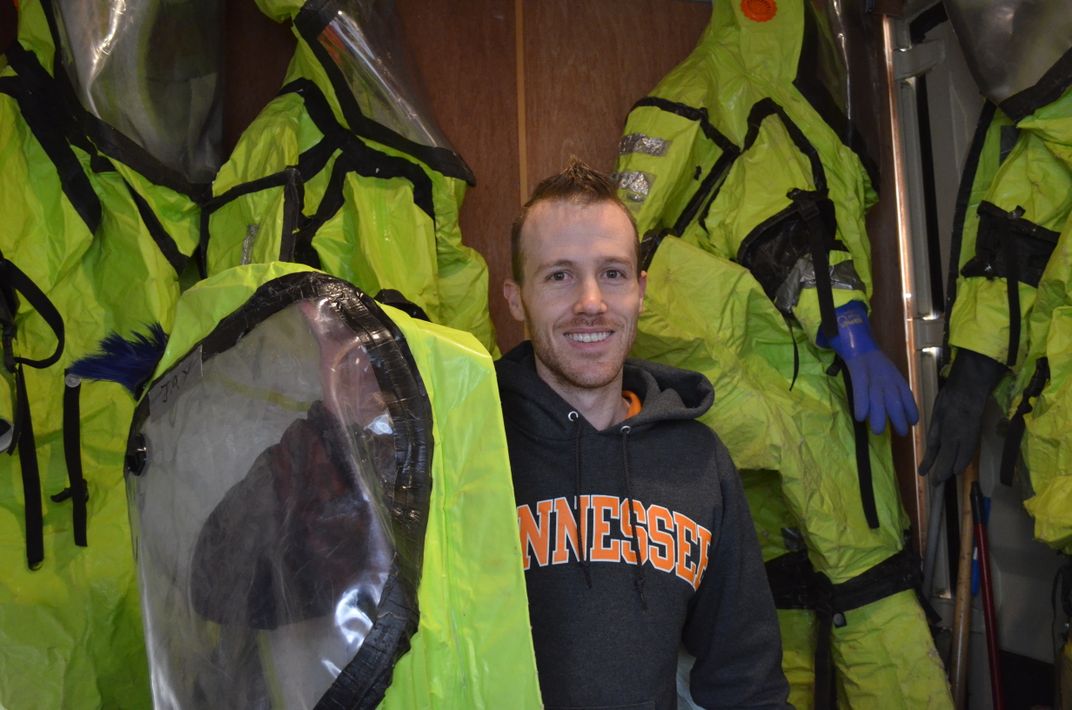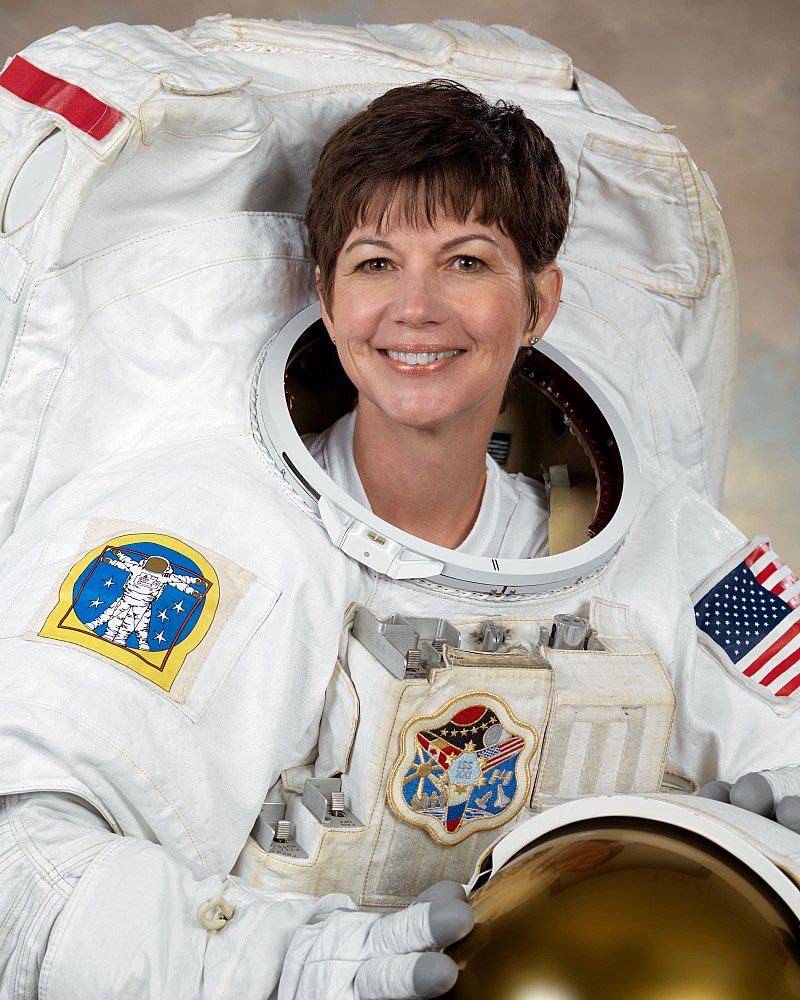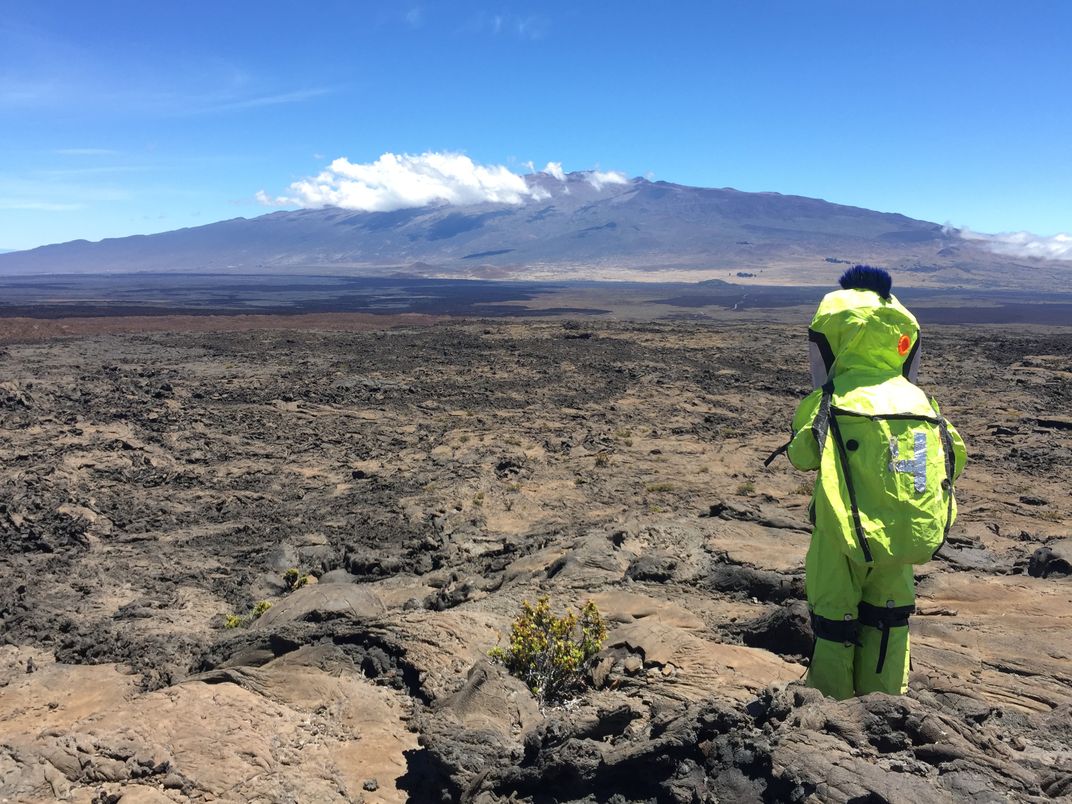Ten Tips From Scientists Who Have Spent Months in Isolation
Find a hobby, for starters, and don’t forget the mission, say scientists who have worked at remote research stations
/https://tf-cmsv2-smithsonianmag-media.s3.amazonaws.com/filer/72/00/72002b27-9da2-4d6c-89e9-6b9ebc480f09/nadja_albertsen_in_antarctica.jpg)
The world is locked down. From the United States to Peru to France to India to South Africa to New Zealand, billions of us are confined to our homes except for essential errands like grocery shopping. We wait and watch, hoping this extreme social distancing will slow the spread of the coronavirus. No one is sure how long this isolation will last—some experts say it could be several months or more. So how can we have happy, productive (or at least semi-sane) days in this strange new reality?
There’s one group that knows: scientists who have lived in space or on remote research stations for months at a time. We reached out to several to get tips for living in isolation.

Have a schedule
Most of the scientists we spoke to emphasized the importance of planning your day to avoid monotony and stay motivated.
Carmen Possnig, an Austrian physician, spent a year at Concordia Research Station in Antarctica, which is used by the European Space Agency to simulate life in outer space. For the nine months of polar winter, she and 12 colleagues lived together on the Antarctic Plateau, conducting research into the effects of isolation. Outside was a barren, icy moonscape, with temperatures below -100 Fahrenheit. The sun didn’t rise for nearly four months. Possnig and her colleagues all experienced “winter-over syndrome,” a constellation of symptoms including irritability, insomnia and mood swings, thought to be brought on by isolation and the extreme climate. To keep herself sane and productive, Possnig divided every working day into half-hour segments the evening before. “If you planned to check news only in the half-hour after lunch, you are not going to spent hours on it,” she says.
American physician Sheyna Gifford spent a year—366 days, thanks to Leap Day—in the Hawaii Space Exploration Analog and Simulation (HI-SEAS), a NASA-funded Mars simulation on the slopes of Hawaii’s Mauna Loa volcano that hosts regular long-term space research missions. She and five crewmates lived in a small white dome, eating freeze-dried astronaut meals and communicating with the outside world via a 20-minute delay, as if they were really on Mars. If they went outside, they had to put on full space suits to simulate Martian conditions.
“If you aren’t the type to go for schedules and checklists, that’s ok,” Gifford says. “Try running your day like a game. Ask: what phase of the day am I in? Along with work, self-improvement and helping others, it’s ok, maybe necessary, to slot in a time for, doing nothing whatsoever. We did this for a few hours one day a month and it was glorious!”

Find a hobby
“In Antarctica, we spent months building a climbing wall,” Possnig says. “I improved my piano skills, learned how to build Roman armour out of plaster, how to speak French and Italian, and started writing a book.”
At HI-SEAS, after Gifford and her crewmates were done with their science experiments and habitat maintenance, they would do art, play music and games, and cut each other’s hair.
James Bevington, another HI-SEAS crew member (though in a different year than Gifford), fondly recalls his team’s open-mic night. They also enjoyed cooking for each other, and once re-created a Subway sandwich bar for dinner.
Get moving
“Since the amount of time we spent outside was very limited, we needed to find an alternative,” says Possnig, of herself and her Antarctic colleagues. “Sports like yoga, Zumba, Pilates or strength training are easily done at home. It helped me with changing perspective on things, improved my physical well-being and reduced stress, making me more relaxed.”
“I went to the gym every day,” says Nadja Albertsen, a Danish physician who spent a year as Concordia’s research doctor after Possnig’s term was over. “Yoga is a really good de-stressor as well.”

Be tolerant
Astronaut and chemist Cady Coleman has been to space three times, the third time being a yearlong mission to the International Space Station. Before that trip, Coleman, who is on the board of the Smithsonian's National Museum of Natural History, lived in a tent in Antarctica for a six-week meteorite-collecting expedition.
“The lesson that I learned there that was very useful on the Space Station was you can’t pick your team, and spending any time wishing your crewmates were different is a waste of time,” she says.
Useful words, perhaps, for those of us stuck at home with squabbling roommates or nit-picking mothers-in-law.
“This is an extreme situation, and not everybody is able to cope well with it,” Possnig says. “Your roommate’s small habit, unimportant until now, may suddenly trigger a fight. This is why it is important to talk about things that one perceives as annoying. The sooner, the better, and always in a friendly, open manner.”
“You really have to understand that mood spreads,” says Bevington. “You can see this really well when your entire social network is just you and five others—if one person wakes up in a bad mood they might snap at somebody and then it just goes around.”
Take it one day at a time
“Moments of low mood or loss of motivation are part of the isolation,” Possnig says. “Trying to see the present helped me—breaking up the challenge into small parts, such as: what can I do now, in the next hours, this week? Every day you’ve made it through will improve your self-confidence and the feeling that you are able to cope with the isolation.”
“Try to appreciate the good things, compliment someone else, and remember that it will end—it is not forever,” Albertsen suggests. “Take a day at a time, if it’s possible.”
Keep in touch
Coleman’s son was 10 when she spent a year on the International Space Station. She missed Christmas. She missed his birthday. To keep close, she could read to him every day over the phone from space (the Peter and the Starcatchers series by Dave Barry and Ridley Pearson, if you’re looking for ideas). She would also help him with homework over the phone.
Gifford recommends reaching out to six people a day. These can be people you know, people with similar interests online and people doing work that interests you.
“Ask them questions,” she says. “Offer words of encouragement. Teach them and learn something from them. Interact meaningfully.”
“Keep in touch with other people as much as possible,” Albertsen agrees. “Talk to each other, have fun and serious conversations. Use whatever means necessary such as Skype or Whatsapp."

Care for something besides yourself
“If you don’t have a pet of some kind, grow a plant or start a bread culture,” Gifford says. “Have something in your life that relies on you to help it live. There’s something viscerally grounding about the experience of feeding a life, however small it may be. Perhaps it helps put into perspective how each of our lives matters. Though the world may feel small on the outside, you are needed, here and now, in this place, for our joint mission—which is survival—to succeed.”
Let go
“My crewmates and I have spoken about how one of the hardest aspects of being isolated and confined isn’t what you can’t do for yourself while inside your bubble, but rather what you can’t do to help the world outside the bubble,” says Gifford.
Gifford’s grandmother became ill and died during the simulation; Gifford had to say goodbye to her over a delayed video message. Another crewmember, a French astrobiologist, watched in horror as his hometown of Paris was attacked by terrorists, resulting in 130 deaths. Unable to make a phone call, he waited hours to find out whether or not his family was safe.
Coleman was in space when she found out her husband had forgotten to give their son the Christmas presents she’d carefully stored away before launch. There wasn’t much she could do about it from 250 miles above Earth. “It’s probably the only time I cried up there on the Space Station,” she says. But she didn’t yell at her husband, she says. She knew he was doing the best work he could as a single dad, and their son was perfectly fine with the Target gift card he’d received instead. “So it’s just [about] letting go,” she says, “and trying to focus on the things you do have control over.”

Focus on the mission
Before Coleman left for the International Space Station, she had to spend nearly two months on pre-departure activities in Russia. Her family came out to see her before launch, but she had to visit from behind a pane of glass because of pre-launch quarantine rules. “That’s a really hard thing, and the way to get through that is to focus on the importance of the mission, and the importance of me not traveling up to the Space Station carrying a cold from my son’s 4th grade class,” she says.
Today, Coleman’s now-19-year-old son uses the same mission mentality to understand why he can’t visit his girlfriend, Coleman says. Because the mission at hand is protecting each other from coronavirus.
Find the good where you can
“Life is really simple, and you get to really focus on the people you’re with,” says Bevington, of living in isolation. “You get to build your own culture and your own little world. It’s something I miss every single day.” Now a PhD candidate in chemical engineering in Sydney, he’s trying to use the lessons he learned at HI-SEAS to make social distancing—with five roommates, coincidentally—as positive an experience as possible.
In Antarctica, Albertsen made a habit of noting five good things every day. “Like when the food was really good, someone told a really good joke or just remembering to enjoy and appreciate the surroundings and people,” she says. She acknowledges that there are major differences between the experience of a scientist on a voluntary, possibly career-boosting mission, and a person at home in coronavirus isolation, worrying if their job will even be there when this is over. But there is light within the darkness.
“One thing I’ve really noticed is the way people are helping, appreciating and taking care of each other—even from a distance,” she says. “No one is alone in this, and remembering this is important, I think.”
/https://tf-cmsv2-smithsonianmag-media.s3.amazonaws.com/accounts/headshot/matchar.png)
/https://tf-cmsv2-smithsonianmag-media.s3.amazonaws.com/accounts/headshot/matchar.png)